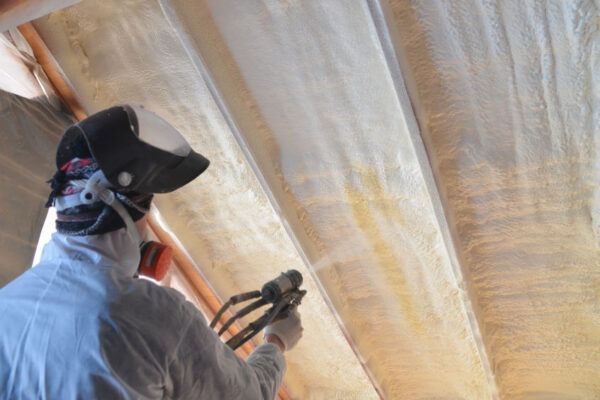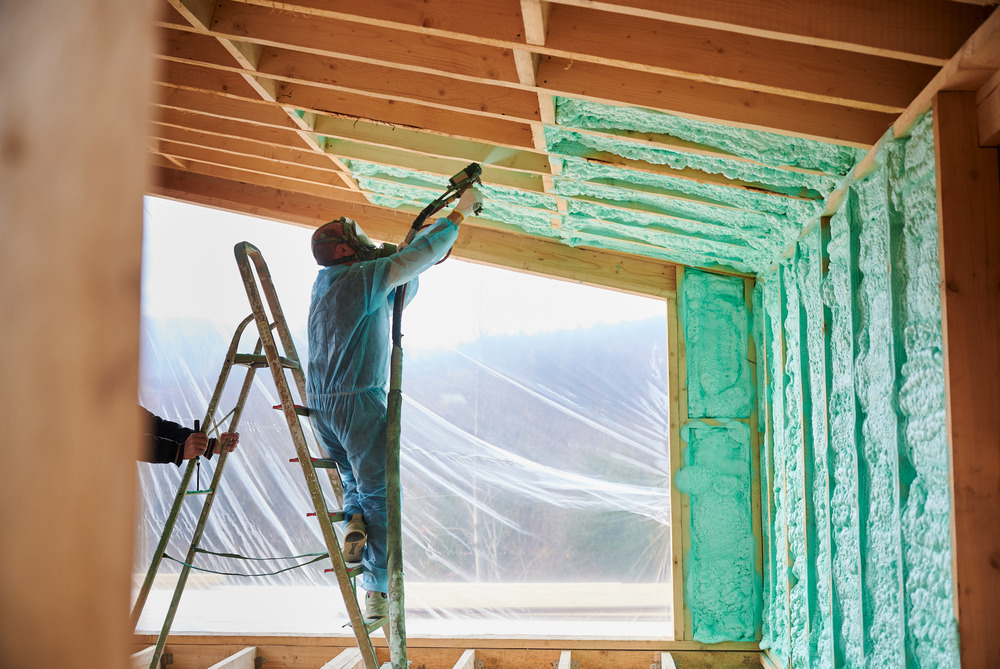Comparing Spray Foam to Standard Insulation: Which Is Much better?
Comparing Spray Foam to Standard Insulation: Which Is Much better?
Blog Article
Spray Foam: The Ultimate Option for Air Sealing and Insulation
Spray foam insulation has arised as a leading remedy for reliable air sealing and thermal insulation, providing an one-of-a-kind combination of residential or commercial properties that establish it aside from typical approaches. Its capacity to broaden and load spaces makes it specifically effective in avoiding air leak, which can significantly influence power effectiveness. Recognizing the full scope of its benefits, installation processes, and contrasts with various other insulation kinds is critical for making notified choices. As we explore these aspects, the implications for both new buildings and retrofits become significantly significant. What elements should influence your selection?
What Is Spray Foam?
Spray foam is a versatile insulation product that combines the concepts of air securing and thermal resistance to boost energy effectiveness in buildings. Made up primarily of polyurethane or various other comparable compounds, spray foam is applied as a liquid that expands upon contact with surfaces, creating a solid, continual layer of insulation. This distinct building allows it to fill up gaps, splits, and gaps that typical insulation materials might ignore, giving a remarkable air seal.
There are two major sorts of spray foam: open-cell and closed-cell. Open-cell spray foam is lighter and a lot more adaptable, using excellent sound absorption and a reduced R-value per inch - Spray Foam. In comparison, closed-cell spray foam is denser, providing a greater R-value, dampness resistance, and included architectural stability to constructing elements
The application process typically entails customized devices, guaranteeing a seamless application that follows numerous substratums, consisting of concrete, steel, and timber. This flexibility makes spray foam suitable for both brand-new buildings and retrofitting existing structures. Its ability to develop an impermeable obstacle dramatically contributes to reducing power usage and improving interior air top quality, therefore making it a preferred choice among building contractors and property owners alike.
Benefits of Spray Foam Insulation
Among one of the most substantial benefits of spray foam insulation is its phenomenal capacity to produce a continual air barrier, which effectively reduces power loss. Unlike typical insulation products, spray foam increases to fill fractures and gaps, making certain that air leak is considerably minimized. This characteristic not just improves power performance however likewise results in decrease utility costs with time.
Additionally, spray foam insulation supplies premium thermal resistance, adding to a more stable indoor setting. Its high R-value per inch permits reliable insulation in confined spaces, making it ideal for attics, walls, and crawl areas. Furthermore, the moisture-resistant homes of spray foam aid stop mold and mildew and mildew growth, promoting much healthier living conditions.
Another important advantage of spray foam insulation is its sound-dampening top qualities (Spray Foam). It properly decreases sound transmission in between areas, creating a quieter and much more comfy home setting. The longevity of spray foam additionally stands apart, as it does not droop or clear up gradually, keeping its performance throughout its life-span
Just How Spray Foam Works
Comprehending just how spray foam insulation works is necessary for appreciating its effectiveness in air securing and thermal resistance. Spray foam insulation is composed of two main components: isocyanate and polyol material. When these components are combined, they undertake a chemical reaction that causes the product to broaden rapidly, producing a dense foam that loads voids, cavities, and splits.
As the foam broadens, it click reference adheres to surfaces, developing an impermeable seal that substantially reduces air infiltration. This characteristic makes spray foam insulation extremely efficient at protecting against drafts and wetness penetration, which can bring about power loss and damages over time. Furthermore, the closed-cell variant of spray foam offers remarkable thermal resistance as a result of its rigid framework, successfully decreasing warmth transfer.
The unique residential properties of spray foam permit it to adapt irregular surfaces, making sure detailed insurance coverage and a smooth obstacle. Because of this, spray foam insulation not only enhances power effectiveness but likewise adds to improved interior air high quality by reducing the buildup of irritants and pollutants. Inevitably, recognizing the auto mechanics behind spray foam highlights its role as a superior selection for insulation and air securing in both property and commercial applications.
Installment Refine Review

Prior to setup, the area has to be properly cleaned up and prepped, ensuring that surface areas are free from debris, moisture, and dirt. This step is vital since pollutants can compromise bond and general efficiency. As soon as the location is prepared, the application includes blending both parts of the spray foam, which expands upon get in touch with and fills gaps successfully.
Educated experts must conduct the installment, using customized tools to guarantee uniform insurance coverage and ideal thickness. Security precautions, including using safety equipment and guaranteeing appropriate ventilation, are vital throughout this procedure. After application, the foam typically treatments quickly, creating a strong barrier that enhances energy effectiveness.
Contrasting Spray Foam to Standard Insulation
When evaluating insulation alternatives, spray foam insulation stands out in contrast to standard products such as fiberglass and cellulose. Unlike fiberglass and cellulose, which can enable air seepage, spray foam increases upon application, loading gaps and voids to develop an airtight seal.
Furthermore, spray foam gives a greater R-value per inch than conventional insulation types, providing even more efficient thermal resistance in a thinner account. This particular is especially advantageous precede with restricted tooth cavity depth. Furthermore, spray foam is immune to moisture and mold and mildew development, which can be a substantial interest in cellulose and fiberglass, particularly in damp atmospheres.
Nonetheless, spray foam insulation generally brings a higher in advance cost than its standard equivalents. Homeowners should weigh this initial investment versus long-term energy savings and performance benefits. Eventually, while both insulation types serve their objective, spray foam becomes a more advanced service for modern insulation needs, particularly in go terms of air securing and thermal efficiency.

Conclusion
In summary, spray foam insulation stands for a highly efficient remedy for attaining ideal air securing and thermal resistance. Its one-of-a-kind homes, including dampness resistance and audio dampening, make it ideal for different applications in both brand-new buildings and retrofitting jobs (Spray Foam). Although the preliminary expenses might be greater compared to conventional insulation products, the long-lasting advantages, such as substantial power cost savings and enhanced interior air top quality, justify the investment and underscore its value in contemporary building methods.
Spray foam insulation has actually emerged as a leading remedy for effective air securing and thermal insulation, offering a distinct mix of properties that set it apart from standard approaches.Spray foam is a functional insulation material that integrates the principles of air securing and thermal resistance to boost power effectiveness in structures.When reviewing insulation options, spray foam insulation stands out in contrast to traditional products such as fiberglass and cellulose. Eventually, while both insulation kinds offer their function, spray foam emerges as a more advanced remedy for contemporary insulation needs, especially in terms of air securing and thermal effectiveness.
In summary, spray foam insulation represents a highly reliable option for achieving optimal air sealing and thermal resistance.
Report this page